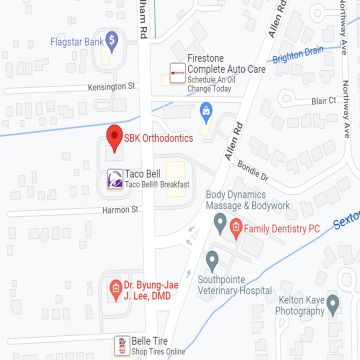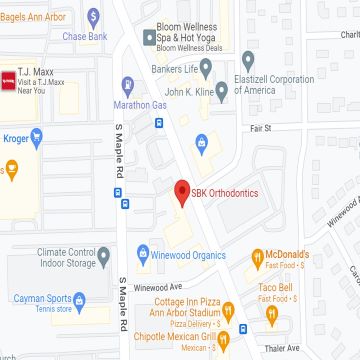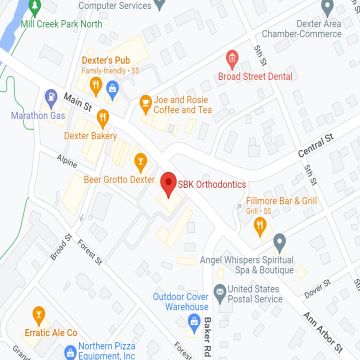Which Is Better? Braces Vs Clear Aligners?

Orthodontic treatment plays a crucial role in correcting dental alignment issues, such as teeth crowding or overbites, making it an essential aspect of oral health and overall well-being.
Regardless of age, orthodontic treatment offers numerous benefits that extend beyond aesthetics and contribute to a person’s long-term health.
What Are the Benefits of Orthodontic Treatment
Orthodontic treatment is crucial for individuals of all ages. It not only improves dental alignment and function but also has a significant impact on oral health, psychological well-being, and overall quality of life. By seeking orthodontic care, patients can achieve a healthier and more attractive smile that lasts a lifetime.
One key importance of orthodontic treatment is the correction of malocclusions, or what people commonly call “bad bites.” Malocclusions occur when there are differences in the alignment of the teeth and jaws, leading to spacing problems, crooked teeth, or misaligned bites.
When you leave malocclusions untreated, the result can be difficulties with chewing, speaking, and maintaining proper oral hygiene.
Orthodontics also has a significant impact on oral health. Crooked or misaligned teeth can be challenging to clean effectively, making them more susceptible to decay, gum disease, and other oral health issues. When you think about it, it’s even logical; cleaning nooks and crannies is harder than cleaning a straight surface.
Straighter teeth improve oral hygiene and decrease the likelihood of dental complications, such as cavities and periodontal disease. And contrary to the common belief, orthodontic treatment does not limit to children and teenagers.
Children’s Orthodontics (Ann Arbor)
Adults can benefit greatly from orthodontics as well. Teeth can shift over time due to factors like natural aging, tooth loss, or previous orthodontic treatment relapse.
Children’s orthodontics has a more preventative approach and usually involves the use of functional appliances before recurring to aligners. Adult treatment can address these concerns, enhancing both dental health and appearance. It can improve the bite, alleviate discomfort, and boost self-confidence.
With children’s orthodontics, we want to protect their smiles, enhancing their confidence and overall quality of life.
Furthermore, orthodontics can have a positive psychological impact. Many individuals with misaligned teeth or malocclusions may feel self-conscious about their smiles, leading to decreased self-esteem and reluctance to engage in social situations.
What Are the Types of Braces?
There are several types of braces available to correct dental alignment issues. Here are the most common types of braces, along with their advantages and disadvantages.
Traditional Metal Braces in Ann Arbor
Traditional braces consist of metal brackets that your orthodontist will cement to your teeth and connect by metal wires. They are the most recognizable type of braces, the ones you have seen your whole life.
Although conventional braces are super reliable and effective for almost any alignment issue with your teeth, they have advantages and disadvantages.
Advantages of Conventional Metal Braces:
- Highly effective in treating complex dental issues.
- Typically the most affordable option.
- Metal braces can withstand the forces required for more significant tooth movements.
Disadvantages of Traditional Metal Braces:
- Highly visible, which may affect the patient’s appearance.
- Can cause mild discomfort or irritation to the gums and cheeks.
- Can difficult the process of dental hygiene.
Ceramic Braces in Ann Arbor
Clear ceramic braces have the same principle as metal braces. The main and almost only difference is that the brackets are tooth-colored instead of metallic. Because these types of braces are ceramic, they tend to be less resistant.
Advantages of Ceramic Braces:
- Less visible compared to metal braces.
- Blend with the natural color of the teeth.
- Effective for moderate to severe dental alignment issues.
Disadvantages of Clear Ceramic Braces:
- Brackets can be more fragile and prone to breakage.
- More expensive than traditional metal braces.
- Can cause mild discomfort or irritation to the gums and lips.
Lingual Braces
Lingual braces are the braces variant people know the less. They go on the back (lingual) surface of the teeth, which makes them virtually invisible from the front.
Advantages of Lingual Braces:
- Invisible when smiling or talking.
- Do not irritate your lips.
- Effective for moderate to severe dental alignment issues.
Disadvantages of Lingual Braces:
- The initial adjustment period may cause speech difficulties.
- Requires longer treatment time in comparison to traditional braces.
- More expensive than traditional metal braces.
What Are the Types of Clear Aligners?
There are different types of clear aligners available for orthodontic treatment. Let’s explore two main categories: in-office clear aligners and mail-order clear aligners, along with their advantages and disadvantages.
In-Office Clear Aligners
In-office clear aligners are provided by orthodontists or dental professionals who oversee the entire treatment process, from planning to monitoring progress. Invisalign is an example of an in-office clear aligner system.
What Are the Advantages of Invisalign:
- Customized treatment: In-office clear aligners are tailor-made for each patient, ensuring a precise and personalized treatment plan.
- Professional supervision: Orthodontists closely monitor the progress and make necessary adjustments throughout the treatment to achieve optimal results.
- Comprehensive dental care: Orthodontic professionals can address other dental issues, such as tooth decay or gum problems, alongside aligner treatment.
Disadvantages of Invisalign Treatment:
- Cost: In-office clear aligners tend to be more expensive in comparison to in-mail options due to the level of customization and professional supervision involved.
- Requires frequent office visits: Patients need to visit the orthodontist regularly for check-ups, adjustments, and progress assessments.
In-Mail or Mail-Order Clear Aligners
In-mail clear aligners are a more affordable alternative where patients receive a treatment kit and perform the process remotely without in-person dental supervision.
Examples of mail-order clear aligners systems include SmileDirectClub and Candid.
Advantages of In-Mail Clear Aligners:
- Cost-effective: In-mail aligners are often more affordable in comparison with in-office options, making them accessible to a broader range of patients.
- Convenience: Treatment kits are sent directly to the patient’s doorstep, reducing the need for frequent office visits.
- Remote treatment: Patients can undergo treatment from the comfort of their homes, eliminating the need for in-person appointments.
Disadvantages of In-Mail Aligners
- Limited to zero professional supervision: While mail-order aligner companies have remote dental professionals overseeing the treatment, having the orthodontist check your progress and oral health is essential.
- Potential risks: Without direct professional supervision, there is a higher risk of complications or incorrect use of aligners, which can impact treatment outcomes.
- Limited scope: Mail-In clear aligners may not be suitable for complex or severe dental issues that require more comprehensive orthodontic care.
Clear Aligners vs. Braces
The answer for which orthodontic appliance is better between clear aligners and braces is for the doctors at SBK Orthodontics (Ann Arbor) to answer!
Dr. Stieper, Dr. Brust, and Dr. Khatib are experienced orthodontists who can provide emergency care, corrective jaw surgery, Invisalign treatment for teens and adults, and more!








